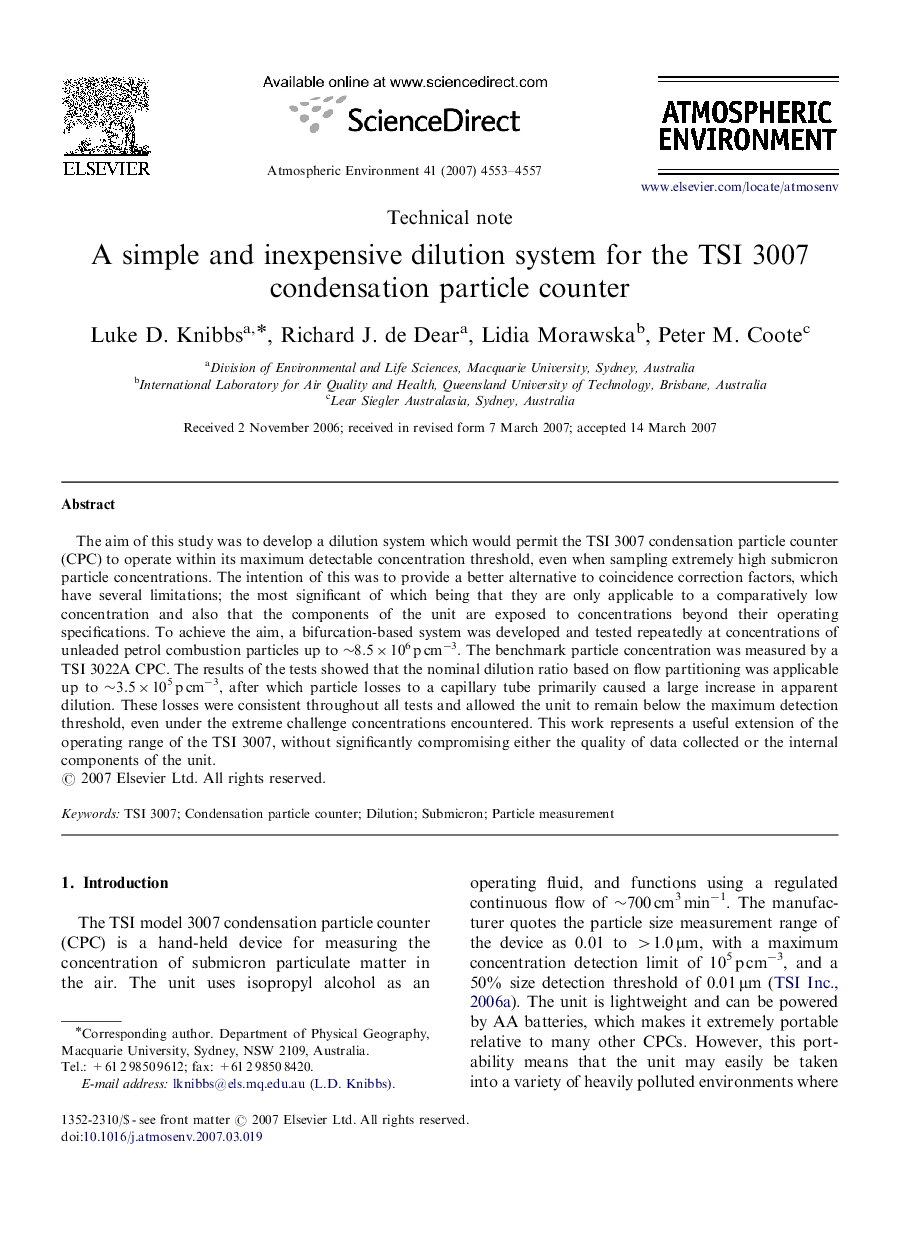| Article ID | Journal | Published Year | Pages | File Type |
|---|---|---|---|---|
| 4443287 | Atmospheric Environment | 2007 | 5 Pages |
The aim of this study was to develop a dilution system which would permit the TSI 3007 condensation particle counter (CPC) to operate within its maximum detectable concentration threshold, even when sampling extremely high submicron particle concentrations. The intention of this was to provide a better alternative to coincidence correction factors, which have several limitations; the most significant of which being that they are only applicable to a comparatively low concentration and also that the components of the unit are exposed to concentrations beyond their operating specifications. To achieve the aim, a bifurcation-based system was developed and tested repeatedly at concentrations of unleaded petrol combustion particles up to ∼8.5×106 p cm−3. The benchmark particle concentration was measured by a TSI 3022A CPC. The results of the tests showed that the nominal dilution ratio based on flow partitioning was applicable up to ∼3.5×105 p cm−3, after which particle losses to a capillary tube primarily caused a large increase in apparent dilution. These losses were consistent throughout all tests and allowed the unit to remain below the maximum detection threshold, even under the extreme challenge concentrations encountered. This work represents a useful extension of the operating range of the TSI 3007, without significantly compromising either the quality of data collected or the internal components of the unit.
